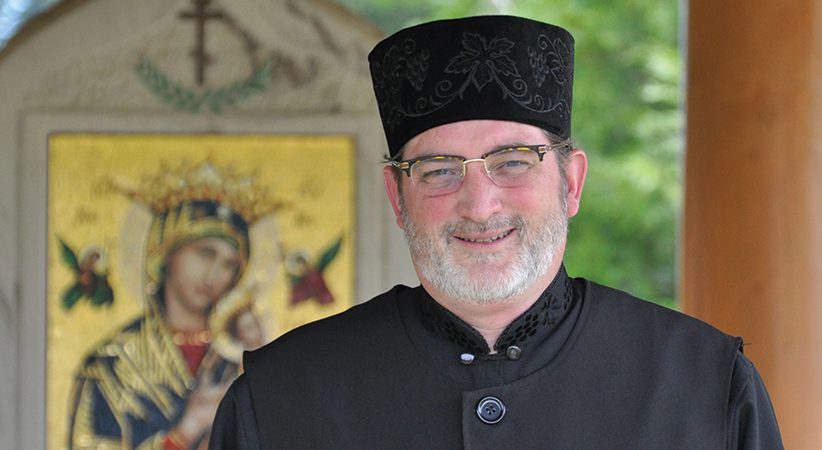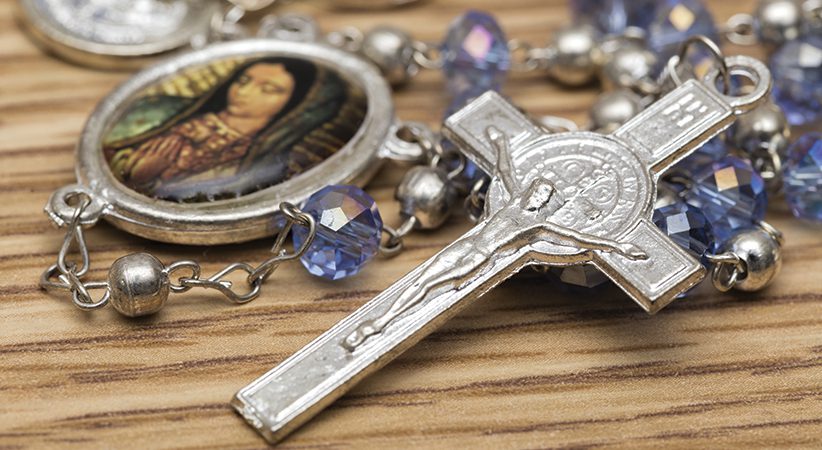Open the Doors of Mercy
Honoring Mary in the Divine Liturgy
Father Deacon Daniel G. Dozier Comments Off on Open the Doors of Mercy
Liturgy is the authentic matrix of Christian piety and discipleship. In this Marian issue of Deacon Digest, I would like to share three specific Marian moments of diaconal service within the Byzantine Divine Liturgy, where, through words and gestures, the deacon inspires authentic devotion to the Virgin Mary among the faithful.
At the beginning of the Divine Liturgy, the deacon opens the “royal doors.” These are the large doors in the center of the iconostasis. The traditional icon on these doors is that of the Annunciation, with the Archangel Gabriel (left door) and the Virgin Mary (right door). This icon reflects the moment of Christ’s incarnation through the announcement of the angel, the faith and fiat of the Virgin and the overshadowing of the Holy Spirit. From a Marian perspective, the opening of these doors is an action with great symbolism since, in the liturgy, the Word enfleshed in both Gospel and mystery through the overshadowing of the Church by the Holy Spirit will become present for the life of the world. Like the Virgin Mary, we are to welcome his presence with faith and love.
At the entrance prayers before the Divine Liturgy, both priest and deacon pray unvested before these doors: “Open unto us the doors of mercy, O blessed Theotokos. Let us not perish who put our trust in you, but rather through you be delivered from misfortune.” As ministers of mercy, deacons also should seek to open the doors of mercy to help all to respond to God with faith so that Christ might be welcomed in our hearts and lives.
The second Marian moment comes during the intercessory prayers offered by the deacon in the Litany of Peace. Standing in between the two principal icons of the Mother of God (left) and Christ (right), at the conclusion of the litanies he exhorts the congregation to commemorate the Virgin Mary and the saints, and to entrust our lives to Christ our God. In the first part of this prayer, he raises his orarion (stole), bowing in supplication to the Virgin, and then turns and does the same gesture to Christ at the end of the prayer. This prayerful movement from the Virgin Mary to Christ expresses the true purpose of Marian piety — to lead us to a deeper relationship with Jesus Christ. Here the deacon is both an intercessor for the living and a true teacher of Christian piety.
The third and final Marian moment for Byzantine deacons comes during the hymn of the faithful to the Mother of God. Following the consecration and the prayer for the overshadowing of the Holy Spirit, the priest commemorates the Virgin Mary as the first among the saints. The faithful then respond with a hymn magnifying the Mother of God. Meanwhile, the deacon takes the censer and circumambulates the Holy Table while continuing to incense the gifts and offering prayers for the deceased whom he would like to commemorate.
The significance of this diaconal action is the recognition that the Virgin Mary is our model of Christian discipleship in both life and death, as well as our advocate and faithful intercessor. Byzantine Christians celebrate her holy birth and holy death at the beginning and end of our liturgical year, and believe that she who has gone before us continues to pray for her spiritual children, living and the deceased. As a faithful intercessor, the deacon joins his prayers to her own for those who have reposed.
|
Like what you’re reading? Subscribe now.
|
As clerical sons of the Virgin Mary, deacons have an important role in fostering a proper affection for and devotion to her among the faithful that we serve. In the Byzantine Divine Liturgy, these three specific Marian moments of diaconal service call to mind our service as ministers of mercy, as teachers of piety and as faithful intercessors for the living and the dead.
May we, through her intercession and our service, open wide the doors to Christ!
FATHER DEACON DANIEL G. DOZIER is a Byzantine Catholic deacon and director of the San Damiano Institute for Catholic Servant Leadership (SanDamianoInstitute.com). He is an associate professor of Scripture at Sts. Cyril and Methodius Byzantine Catholic Seminary in Pittsburgh.





